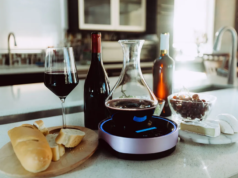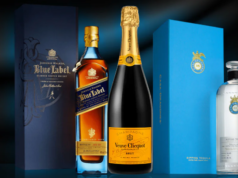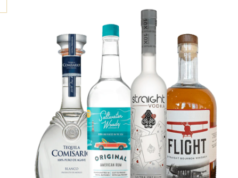Despite stagnant sales, vodka is benefiting from the ‘craft’ craze and a rise in interesting
Despite the prejudiced belief that vodka is staid and boring, the category was reassuringly active in 2018. New brands were launched and established players unveiled fresh looks and campaigns, interest in flavours was reawakened and the ‘craft’ contingent continued to gain momentum.
Spiros Malandrakis, senior analyst at market research provider Euromonitor International, says: “As the ripple effects of the saccharine waves over vodka and the resulting flavour fatigue begin to subside, transparency, a shift of focus back towards provenance, a return to vodka’s unpretentious positioning and high energy roots, and its evolution through hyperlocal campaigns and local iterations will begin to stem the tide in its still-haemorrhaging core markets.
“Since the downward pressure is ultimately cyclical, the roaring performance of the past decade will not be back, but pockets of opportunities will begin to surface.”
According to predicted Euromonitor data, volume sales of vodka will remain stagnant in 2018, at almost three billion litres. The suffering of the key eastern Europe region is expected to continue, following a volume loss of 1% in 2017. While many of the area’s domestic brands have been hit by competition from premium imported spirits, others have thrived.
Ruslan Grigoryev, export director at Ladoga Group, notes a 21% sales increase for his Tsarskaya/Imperial Gold brand in the first 10 months of this year. Strong markets for the brand include CIS countries, travel retail, Germany, Czech Republic, Bulgaria, China, Latvia, Dominican Republic, Japan
However, Eugenio Litta Modignani, CEO of Tovaritch Spirits International, says “significant momentum” in the gin category has taken interest from premium vodkas in the on-trade. Meanwhile, in the off-trade and duty free, “high maintenance costs do not help growth”.
Regardless, Litta Modignani remains optimistic: “The outlook is positive for the category and ‘diversification’ remains the key word for any brand owner. The category has experienced different trends over the past two decades, and many predictions have been proved wrong.”
One such prediction could be the proverbial flavour fall-out. While wacky iterations have certainly had their heyday, brands continue to pursue thoughtful flavour innovation. Only in September, Grey Goose reintroduced its La Vanille expression in response to demand from bartenders.
Moskovskaya, owned by Amber Beverage Group, is preparing to launch an ‘infusion’ range next year to “address the latest consumer trends of mindful drinking, craft and changes in consumption habits”.
According to Renatas Alekna, global brand director, 2019 will be a year of “rejuvenation and innovation” for Moskovskaya. This will follow success in “strengthening” its position in core markets this year, particularly the UK, and its Australian debut.





